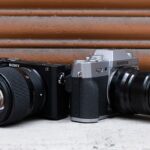
Just how brand-conscious are you when buying gadgets?
Nowadays, choosing a gadget just because the brand is well-known and prestigious can be the quickest way of getting ripped off. In this is the era of globalization, where even the biggest brands outsource their production through vast global supply chains, it is the height of folly to walk into an electronic shop full of dazzling gadgets and make your selection out of sheer name recall.
The tech world of today does not even vaguely resemble the one three decades back. Where before such household names such as HP, Dell and Sony would be the wises choices even without bothering to look at the gadgets’ specs, intense competition between established brands and well-funded startups, aspiring tech “unicorns” have steadily eroded the market share of the best-known names in the industry through sheer product innovation and competitive pricing. One needs to do some research before making a choice.
A look at two smartphone giants from different generations, Asus and Sony, would would serve to illustrate this point. It also shows how their respective pricing strategies reflect the new realities of big tech competition.
A Tale of Two Phone Makers
Asus (formally ASUSTek Computer Inc.) is a Taiwanese company founded in 1989 that gradually established itself as the world’s 5th largest PC vendor, but later also began muscling its way into the highly-competitive smartphone market with its Zenfone offerings. On the other hand, Sony (officially Sony Group Corporation) started in 1946 in Japan and became a “corporate octopus”, with business interests spanning widely diverse industries: electronics, entertainment, private insurance, chemicals, cosmetics, home shopping and even a Tokyo-based French food joint.
When Sony broke into the mobile phone business, it entered into a venture with the Ericsson company to form Sony Ericsson Mobile Communications. The phones under this joint brand became renowned for reliability and for featuring such innovations as cameras and multimedia capability. By the time sales took off, however, Sony Ericsson had began to encounter stiff competition from Apple’s first iPhone in 2007, and sales went steadily downhill. From being the 4th largest mobile phone maker in 2009, it fell to 6th place the following year.
Sony eventually ditched the Ericsson co-branding and launched its Xperia smartphone brand in 2013. While this move initially resulted in brisk sales (peaking at 40 million units in 2014) the smartphone market had by then become very crowded, especially with the entry of low-priced but highly-capable offerings from rising Chinese brands like Xiaomi, Meizu and Huawei. Similarly based on the popular Android platform as most of their peer competitors (with the notable exception of iPhone), Xperia phones simply did not have enough compelling features to justify their premium pricing. Sony’s mobile shipping figures told the dismal story of a steady competitive decline: 13.5 million phones in 2017, 6.5 million in 2018, and 2.9 million in 2020.
The development of Asus’s mobile business has a different trajectory than Sony’s, focusing mainly on the mass market with its Zenfone series. This is the same approach that mainland China brands have taken, the difference being that Asus had a headstart in the tech market for at least a couple of decades. But while “China phones” have had phenomenal success in the global market, particulary in developing countries, the Zenfone’s market traction has been modest. This can be due to a higher price point and a less aggressive marketing strategy than its mainland competitors. Recently however, Asus has began showing signs that it wants to break into the premium tier without sacrificing affordability.
Asus Zenfone 8 vs Sony Xperia 5 ii/iii
While there are no comparative sales figures for its various models, Asus’s Zenfone 8 that came out in 2021 has amazed reviewers with its value for money, with some lauding it as the year’s best offering in the small phone category. It is a 5G flagship phone that has not scrimped on its specs – Snapdragon 888, with varying memory and storage interations that peak at 16GB RAM and 256GB storage and sold at HKD 6,300 (USD 808) in the first few months of its release.
At that time, I was looking for a smallish Android-based phone that won’t drain my bank account, and the Sony Xperia 5 iii had just come out the previous month. I had a look at it, and the price tag was just eye-watering and the specs were rather underwhelming for such a pricey phone. It does have the Snapdragon 888, it was also 5G, it has a triple-camera setup (which I rather liked), but the RAM was only 8GB. And the price? HKD 7,599 (USD 974). It was an even bigger pain looking at the tag on its bigger cousin, the Xperia 1 iii, which was the actual flagship. HKD 9,299 (USD 1,192) was just too much even for a premium Android phone, especially for one that only topped at 12GB RAM compared to cheaper competitors that already had 16.
I quickly went over to the Asus display section, and voila, the (almost) perfect phone was waiting for me. It was thrilling to hear the specs and the lower price being “spieled” by the salesperson, and though the camera was not as flashy as those on the Xperia phones, I couldn’t have cared less. As an enthusiast-level photographer I would rather use a mirrorless camera for serious photography than any phone camera, which I needed only for wide snapshots and the occasional awkward selfie.
A few years ago, I was enamored with Sony Xperia phones, not least due to brand prestige. I previously owned the Z and Z1 version, and until 2020 I had the 5 ii which I sort of loved. The common problem with these models were that the screen was dim, the firmware updates were rare and the operation can be buggy. The camera was always a bragging point for Sony in selling their phones, touting them as having some of the same features as their mirrorless cameras. To my dismay, I discovered later that it was just marketing hype, especially for the 5 ii. The focusing was very slow and the low-light capability was inferior to other premium phones, including the much cheaper China ones. I vowed never to get another Sony phone, at least not at their current pricing scheme.
And therein lies the problem: Sony smartphones are just way overpriced. I couldn’t care less if the company spent more on R&D just to create them. They’re not getting my money, and as their phone sales figures show, most people think likewise. An Xperia reviewer once wrote that Sony is probably mimicking Apple’s pricing strategy, deliberately overpricing their smartphones to make the point their product is premium, and it sure doesn’t hurt they rake in bigger profits as a result. But the funny thing is, Apple sells better smartphones at lower prices than Sony’s. And here’s an even funnier thing: in most reviewer benchmarks, the Asus Zenfone 8 performed better than the Xperia 5 iii.
So what is the main takeaway here? Don’t be suckered in by marketing hype and brand snobbery. But sadly, many buyers still fall for these tricks of trade, as proved by the fact that at online shops old iPhones with 60Hz screen refresh rates are still worth more than my used Asus Zenfone 8 with its 120Hz display. I also managed to sell my 5 ii for more than half of its original price after a year of use, whereas my Zenfone can’t even be sold for less than half even with a few months of warranty left. Why? Because it is “just” Asus. Market irrationality is very plain to see here.
So, next time you buy a smartphone, check the specs carefully and make comparisons. These should be balanced against your actual need in getting the gadget. Sales people are good at throwing impressive specs around when they are trying to sell you something, but you should ask yourself whether its functions are adequate for your intended purpose. Do not focus solely on the brand, as many of these brands, expensive or budget-priced, may actually be using the same essential parts from the same supplier. Some brands pour a lot of money into marketing but pass these on to the consumer, bloating the product’s SRP past it’s real value as a result.
Be a smart gadgeteer.



